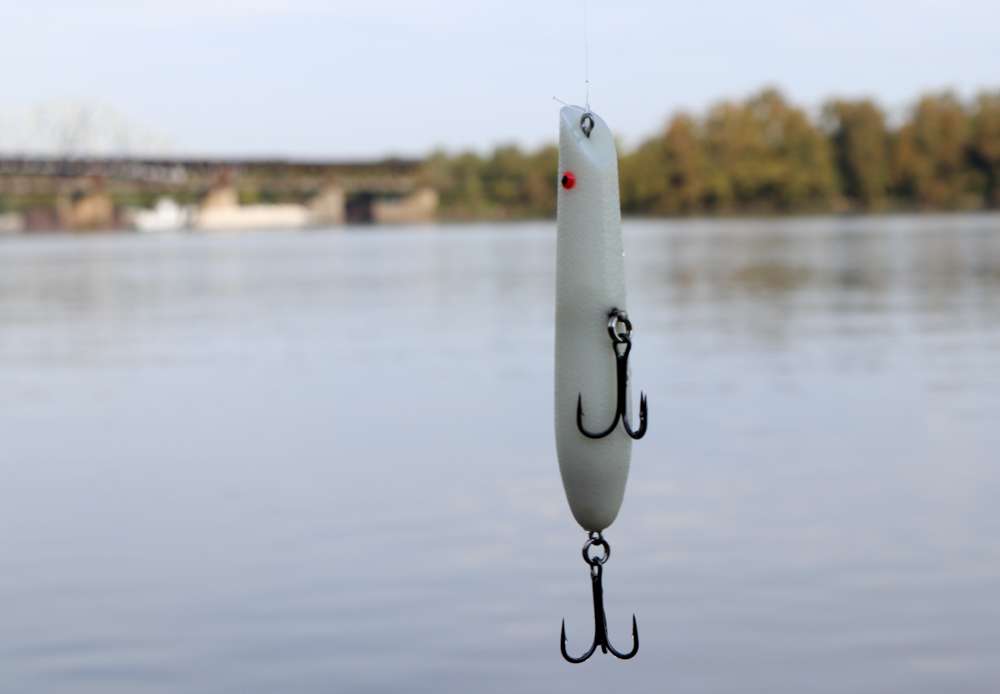
Yesterday, second-place pro Bobby Stanfill described his day as “torture.” We asked him how he justified that statement, given his strong performance and he said it was a case of what could’ve been.
“I was around a lot of fish (on Wednesday) but they didn’t want to cooperate,” Stanfill. “I only caught 10-12 fish and if I would have caught half of what was around my bait, we could’ve sunk (the release boat).
“It was a hard day because I was around a lot of fish, but they wouldn’t bite. Day 1 was just a grind right out of the gate. It was just grind all day long to get the next bite. Where can I get the next bite? Can I get the next bite?”
Many competitors are relying heavily on a large topwaters — many of them pencil poppers. Stanfill that Wednesday’s calm conditions likely contributed to the fish’s wariness. Even aggressive spotted bass turn skittish in high visibility.
“The first thing you do is try to change the action of your lure and the speed of your lure,” Stanfill said. “If that doesn’t work, you can change color. And one thing I think is important is the sound of the bait. Maybe I’m using a quiet bait and they’re not reacting, so I go to a noisy bait or vice versa.”
Stanfill said he found that working a silent bait at a high rate of speed most productive.
Oklahoma pro Jason Christie, eighth on Day 1, explained his strategy:
“I’m using Garmin LiveScope and I’m able to see them before I cast at them. If they’re grouped really tight and I think they’re going to be competitive, I’ll burn the bait through there as fast as I can and usually that will draw them.
“If they’re kind of scattered, it seems like more of a medium retrieve is best. I’ll tell you this, you get one to bite for every 500 that follow your bait. Whoever figures out how to catch those fish that follow a bait will win every tournament here in the fall.”
With today’s dimmer skies and afternoon rain chances, it’s likely the fish will be less apprehensive.
On the other hand, fish generally tend to exhibit greater reluctance on a tournament’s second day, as spots that were beaten on the first day, receive a follow-up round of fishing pressure. We’ll be curious to see how these factors balance out and whether or not we hear of more committed fish.


